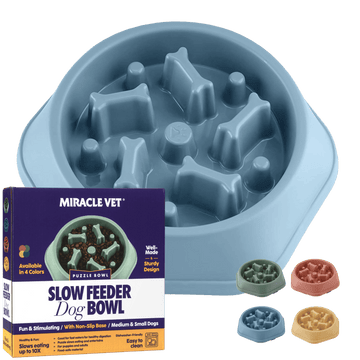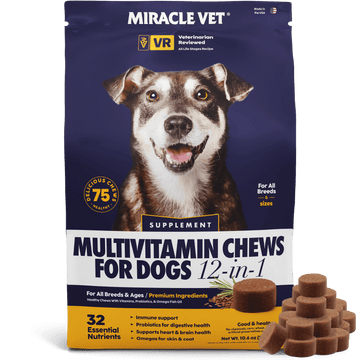Why Your Dog's Weight Matters
Maintaining your dog’s healthy weight and body fat is more than just an aesthetic concern—it’s vital to their overall health and longevity. If your dog is underweight, it may point to underlying health issues, inadequate nutrition, or stress that can lead to a reduced quality of life. Recognizing the early signs of an underweight dog allows you to act fast and get your pup back on track with proper care and veterinary guidance.
From reduced energy to visible bones, there are many ways your puppy’s body and behavior can signal they’re not at an ideal weight. Regularly checking your puppy’s body condition score and making timely dietary adjustments can help prevent more serious health problems.
What Causes Dogs to Be Underweight?
Common causes of weight loss in dogs include:
-
Insufficient food intake or poor nutrition
-
Internal parasites or digestive issues
-
Dental problems are making it painful to eat
-
High activity levels burn more calories than are consumed
-
Stress, anxiety, or environmental changes
Identifying the root cause is key to helping your dog regain a healthy weight.

Recognizing an Underweight Dog Symptoms: What Vets Recommend
Sharp dog’s waist and pronounced abdominal tuck
-
Easily visible ribs or spine
-
Sharp waist and pronounced abdominal tuck
-
Low energy or fatigue
-
Reduced appetite or disinterest in food
-
More frequent illnesses due to a weakened immune system
-
Lack of muscle tone, especially in the hind legs
-
Thin, bony tail
-
Sunken appearance in the abdomen
If several of these signs sound familiar, it’s time to assess your dog’s body condition more closely.
Visual Signs: Ribs, Spine, and Pelvis
Being able to feel your dog’s ribs is normal, but if you can see them clearly, they may be too thin. Prominent vertebrae, hip bones, and a lack of muscle mass are strong indicators that your dog isn’t getting enough nutrients.
Check your dog’s silhouette and compare it to a Body Condition Score (BCS) chart. If bones are standing out or the waist appears overly tucked, your pup may need a nutrition boost.
Behavioral Changes & Low Energy
One of the most common symptoms of an underweight dog is reduced energy. Dogs that aren’t eating enough often become lethargic, disengaged, or lose interest in walks and playtime.
This behavioral shift often accompanies muscle loss or insufficient calorie intake. If your dog seems less enthusiastic or more withdrawn, their nutrition may be falling short.
Appetite Changes to Watch For
Has your dog been skipping meals or eating less than usual? A sudden drop in appetite is a red flag. It could be related to:
-
Stress or anxiety
-
Illness or infection
-
Dental pain
-
Poor-quality dog food lacking essential nutrients
Try offering smaller, more frequent meals and monitor their interest in food. If their eating habits continue to decline, consult your vet.
Lethargy and Decreased Activity
Dogs need calories to stay active. If your pup seems unusually tired, avoids movement, or spends more time sleeping, they may not be getting enough energy from their diet.
Muscle wasting can also sap their strength. Supporting your dog with the right nutrition can restore their vitality and physical performance.
Dull Coat? It May Be a Nutrition Issue
A dog’s coat is often a mirror of their health. Underweight dogs frequently have dull, brittle, or patchy fur. This is a result of malnutrition, as the body prioritizes essential organs over skin and coat health.
Adding healthy fats, proteins, and nutrients can improve coat shine and overall well-being.
Digging Deeper: Why Your Dog Is Losing Weight
Poor Nutrition and Malnourishment
Feeding your dog the wrong type—or amount—of food can quickly lead to weight issues. Common mistakes include:
-
Serving low-quality dog food
-
Feeding amounts too small for their size/activity level
-
Using food not formulated for your dog’s breed or life stage
Look for high-calorie, protein-rich food designed to support weight gain.
Health Conditions That Affect Weight
Some medical conditions that may cause unexplained weight loss in dogs include:
-
Parasites (e.g., roundworms, hookworms, and other worms)
-
Digestive disorders (e.g., IBS, pancreatitis)
-
Metabolic diseases
-
Cancer or tumors
-
Dental disease
-
Diabetes or thyroid issues
If you’ve ruled out diet and stress, it’s time for a veterinary check-up.
Helping Your Dog Gain Weight: A Beginner's Guide
If your dog is underweight, weight gain should be gradual and controlled. Here’s how to get started.

Step-by-Step Weight Gain Plan
|
Step |
Action |
|---|---|
|
1 |
Calculate daily caloric needs based on your dog’s size and energy level. |
|
2 |
Add nutrient-rich food and high-calorie supplements—look for high-protein, high-fat, easy-to-digest formulas. |
|
3 |
Offer smaller meals more frequently to improve digestion and appetite. |
Body Condition Score (BCS): How to Tell If Your Dog Is Too Skinny
The Body Condition Score system helps assess how close your dog is to their ideal weight and normal weight. Scores range from 1 to 9:
-
1–2: Severely underweight (visible bones, no fat, sunken appearance)
-
3–4: Underweight (easily felt ribs/spine, minimal muscle mass)
-
5: Ideal body condition
-
6–9: Overweight to obese
Touch and observe your dog’s shape, then compare it to the BCS chart. A score of 1 or 2 signals a need for immediate nutritional intervention.
When to See the Veterinarian
If you’ve adjusted your dog’s diet but haven’t seen improvement, it’s time to consult your veterinarian. Look for these red flags:
-
Continued weight loss
-
Refusal to eat
-
Signs of illness or infection
-
Noticeable drop in energy or mood
Why Medical Evaluation Matters
A full check-up can uncover hidden issues like parasites, internal diseases, or nutrient absorption problems. Vets may recommend:
-
Diagnostic tests
-
Prescription diets
-
Medication or supplements
-
Referrals to a veterinary nutritionist
Early detection and treatment are key to helping your dog recover fully.
Conclusion: Keep Your Dog’s Weight in Check
Understanding the signs of an underweight dog—and knowing how to respond—can make a big difference in their quality of life. Monitor changes in appetite, activity, and body condition regularly. When in doubt, your vet or vet nurse is your best resource.
A healthy weight supports stronger immunity, better energy, and a shinier coat—helping your furry friend live a longer, happier life.
Frequently Asked Questions
How do I know if my dog is underweight?
Look for visible ribs or spine, a pronounced waist, and a lack of muscle. Use the Body Condition Score for confirmation.
How often should I feed a skinny dog?
Feed 3–4 smaller meals a day to encourage weight gain and support digestion.
What should I feed to help my dog gain weight?
Choose high-calorie, protein- and fat-rich food formulated for weight gain. Consider raw diets or superfoods if approved by your vet.
Why is my dog skinny despite eating well?
Your dog may have an underlying condition like parasites, poor nutrient absorption, or a metabolic issue. Visit your vet to find out.
Is it normal to see a dog’s ribs?
In some lean breeds like Greyhounds, yes. But for most dogs, prominent ribs are a sign of being underweight.











